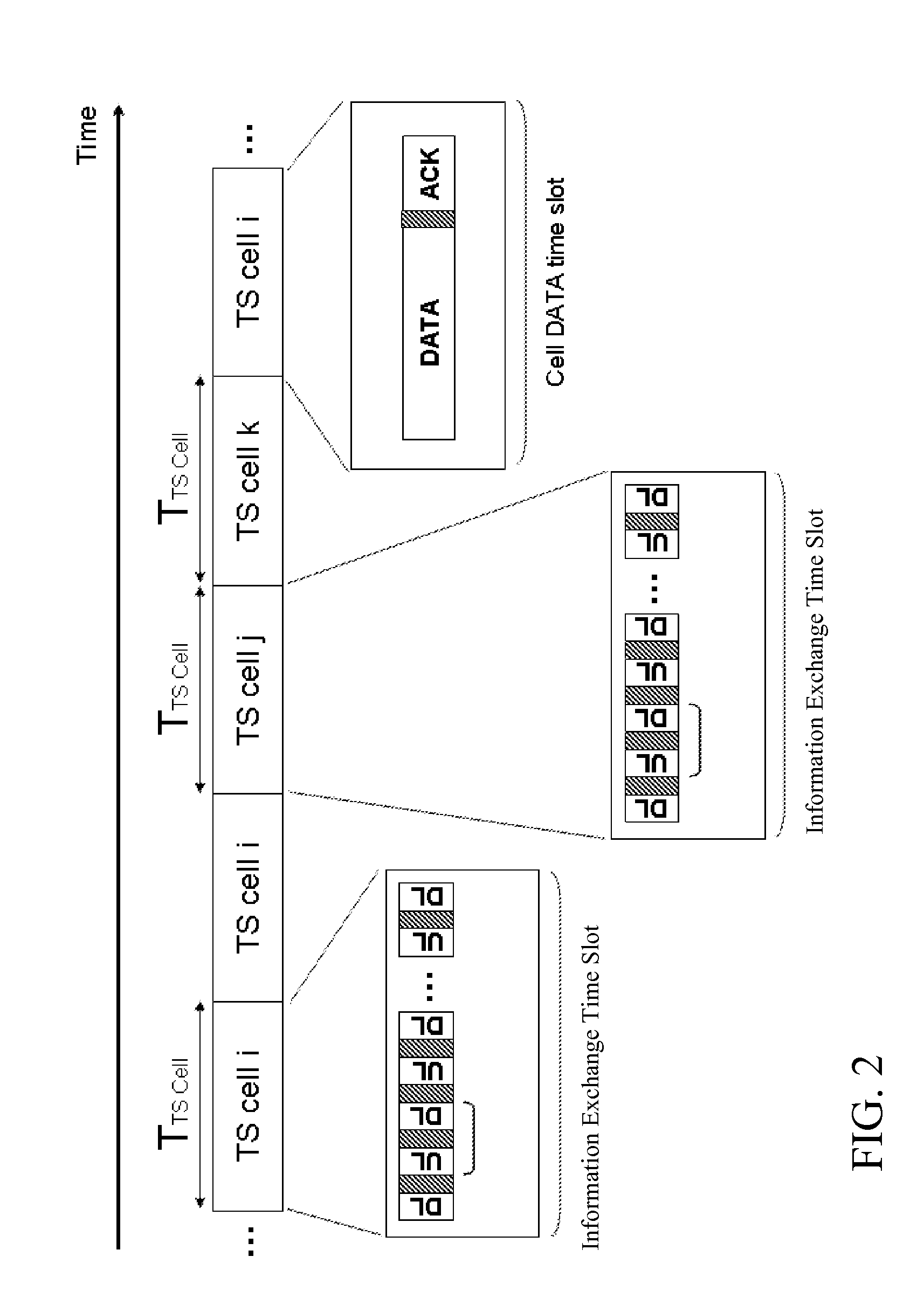Orthogonal frequency domain multiplexing (OFDM) communication system
a frequency domain and communication system technology, applied in multiplex communication, wireless commuication services, assess restrictions, etc., can solve the problems of not having the same economic potential for commercial radio communication systems, the available spectrum resource for radio communication systems is a significantly limited and expensive resource, and many of the allocated bands tend to be only sparsely used, so as to improve resource utilisation, flexible and/or more efficient resource utilisation, the effect of improving resource utilisation
- Summary
- Abstract
- Description
- Claims
- Application Information
AI Technical Summary
Benefits of technology
Problems solved by technology
Method used
Image
Examples
Embodiment Construction
[0046]The following description focuses on embodiments of the invention applicable to a Wireless Local Area Network (WLAN) using Orthogonal Frequency Division Multiplex (OFDM) communication but it will be appreciated that the invention is not limited to this application but may be applied to many other communication systems using OFDM, including for example mobile cellular communication systems.
[0047]FIG. 1 illustrates an example of a cellular WLAN communication system in accordance with some embodiments of the invention.
[0048]In the example, a number of remote nodes 101, 103, 105 are supported by a number of central nodes 107, 109. The central nodes 107, 109 are interconnected by an interconnect network 111. The central nodes 107, 109 can for example be base stations or access points and each central node 107, 109 supports a geographical area defining a cell. The cells of the different central nodes 107, 109 are in the example partially or fully overlapping cells. It will be apprec...
PUM
 Login to View More
Login to View More Abstract
Description
Claims
Application Information
 Login to View More
Login to View More - R&D
- Intellectual Property
- Life Sciences
- Materials
- Tech Scout
- Unparalleled Data Quality
- Higher Quality Content
- 60% Fewer Hallucinations
Browse by: Latest US Patents, China's latest patents, Technical Efficacy Thesaurus, Application Domain, Technology Topic, Popular Technical Reports.
© 2025 PatSnap. All rights reserved.Legal|Privacy policy|Modern Slavery Act Transparency Statement|Sitemap|About US| Contact US: help@patsnap.com



